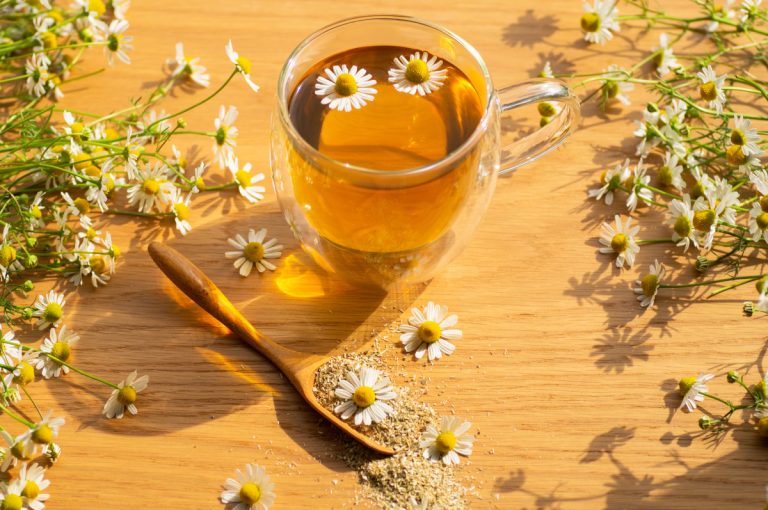Ever wondered if that soothing cup of chamomile tea tastes as serene as it makes you feel? Determining the precise flavor profile presents a mild challenge, as the taste is nuanced and influenced by several extraneous factors. But fear not, we’re about to unravel the complexities of chamomile’s gustatory allure.
The Baseline: What You Should Generally Expect
At its core, chamomile tea typically presents a light, floral flavor. Many describe it as having a subtle sweetness, almost akin to a crisp apple. The key is subtlety. This isn’t a tea that will knock you over with intensity. Instead, it offers a gentle, soothing experience for the palate.
Digging Deeper: Nuances in Taste
While the above provides a good baseline, the taste of chamomile tea can be surprisingly complex. Consider these contributory factors:
Variety of Chamomile: German chamomile, the most commonly used variety, tends to have a slightly more pronounced flavor than Roman chamomile. German chamomile may possess a hint of bitterness, while Roman chamomile is often sweeter and more aromatic. It is essential to recognize the differences between these two principal variants.
Preparation Method: The way you prepare your chamomile tea significantly impacts its flavor. Over-steeping can release bitter compounds, turning a delightful brew into something far less palatable. A shorter steeping time, typically around five minutes, yields a lighter, sweeter flavor. Use water that isn’t boiling but rather just off the boil. This prevents scorching the delicate flower and extracting unwanted bitter essences.
Water Quality: Like any tea, the water you use plays a crucial role. Filtered water is always preferable, as tap water can contain minerals and chemicals that can interfere with the natural flavor of the chamomile. Hard water, in particular, can create a flat or metallic taste. The selection of your hydric medium is paramount.
Additives: Many enjoy chamomile tea with additives like honey, lemon, or milk. These additions alter the overall flavor profile, masking or complementing the underlying chamomile taste. Honey enhances the natural sweetness, while lemon introduces a tart contrast. Milk can create a creamier, more substantial beverage. Consider how these additions augment, or detract from, the tea’s inherent character.
Decoding the Lexicon: Descriptors of Chamomile Tea
To truly understand the taste of chamomile tea, it’s helpful to familiarize yourself with the common descriptors used to characterize its flavor:
Floral: This is the most prominent descriptor. It refers to the delicate, flowery aroma and taste reminiscent of blossoms. It evokes an olfactory and gustatory connection to the natural world.
Sweet: Chamomile possesses a subtle, natural sweetness, often compared to apples or honey. This sweetness is not overpowering but rather a gentle undertone.
Earthy: Some chamomile teas may exhibit an earthy note, particularly those grown in specific soil conditions. This adds depth and complexity to the flavor profile.
Hay-like: High-quality chamomile often has a faint hay-like aroma and taste, indicating freshness and proper drying. It speaks to the tea’s agrarian origin.
Slightly Bitter: As previously mentioned, over-steeping can release bitter compounds. However, a slight bitterness can sometimes be present even in well-prepared chamomile tea, adding a counterpoint to the sweetness.
Beyond Taste: The Sensory Experience
The taste of chamomile tea is only one aspect of the overall sensory experience. The aroma also contributes significantly to our perception of flavor. The delicate floral scent enhances the soothing effect and prepares the palate for the subtle taste to come. Furthermore, the warmth of the tea can have a comforting and relaxing effect, adding to the overall sense of well-being.
Finding Your Perfect Cup
Ultimately, the best way to determine what chamomile tea tastes like is to try it yourself. Experiment with different varieties, preparation methods, and additives to find your perfect cup. Don’t be afraid to explore different brands and sources, as each may offer a unique flavor profile. Consider the origin of the chamomile flowers, as terroir can significantly influence the taste.
In Conclusion: More Than Just a Taste
The taste of chamomile tea is a multifaceted experience. It is more than just a flavor; it’s a sensory journey that encompasses aroma, warmth, and a sense of well-being. It’s a testament to the power of simple ingredients to create a profoundly soothing and enjoyable beverage. So, the next time you sip a cup of chamomile tea, take a moment to appreciate the subtle complexities of its flavor and the myriad of factors that contribute to its unique character. Delve into the intricate symphony of sensations that unfold with each and every soothing sip.







Leave a Comment